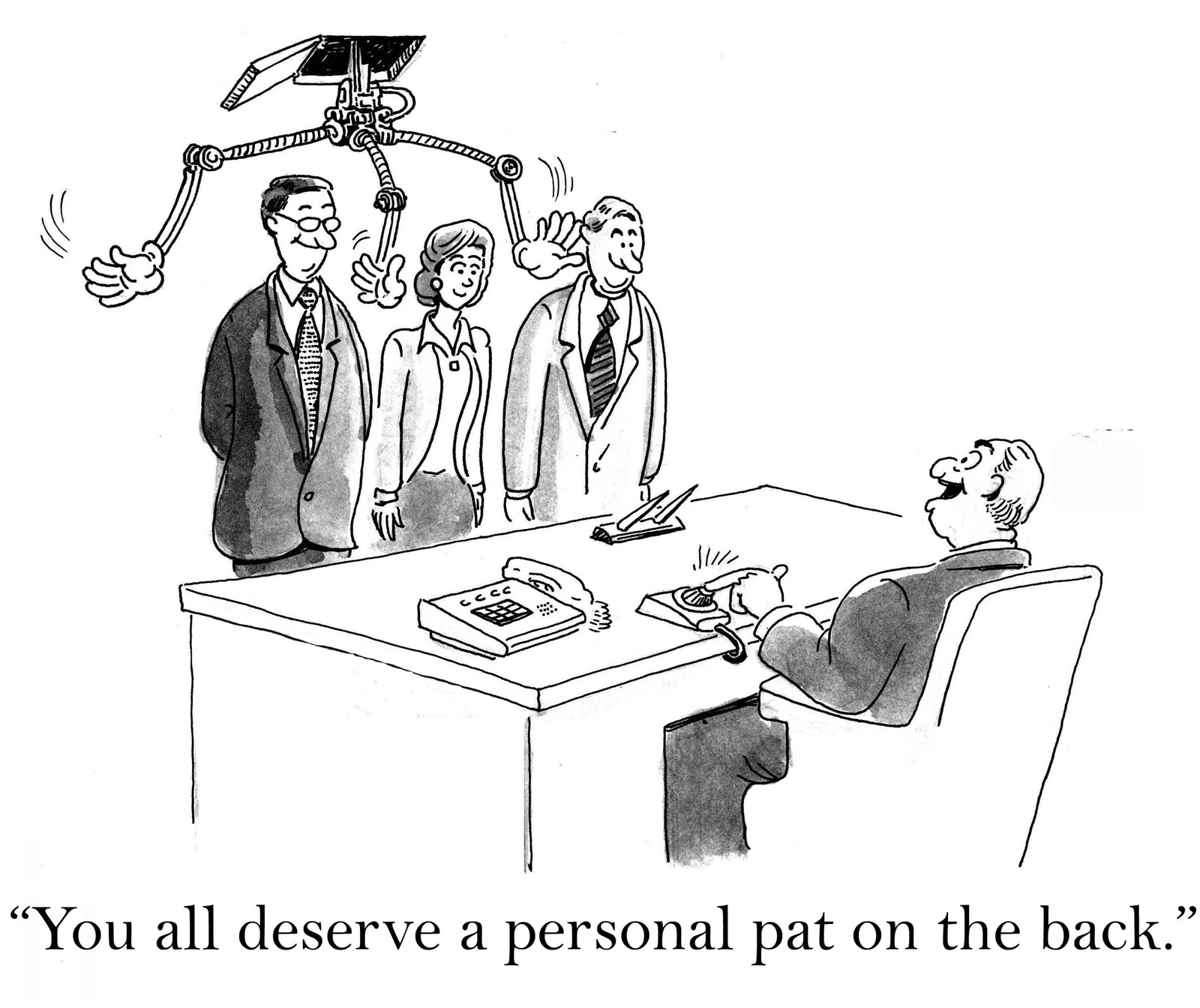
5 Inbound Marketing Myths from INBOUND16 *DEBUNKED*
In the past couple of weeks since I got back from the INBOUND16 conference in Boston, I’ve had some time to pause & reflect on what I learned there.
First off, kudos to the our friends at HubSpot for pulling off a massive 19,000-person conference. Some small tweaks (session pre-registration, etc.) fixed a TON of the logistical issues from previous years.
(Full disclosure: we’re a HubSpot Diamond Partner Agency).
That said, I wanted to give a take on this conference that’s a little bit different than what you’ll hear from most agencies. Here’s what you might typically expect from a post like this:
“Brian Halligan & Dharmesh Shah (HubSpot’s founders) said XYZ is dead — so do ABC instead!”
“[Insert keynote speaker here] was amazing!!!”
“Here are 9 exciting product announcements from HubSpot that will BLOW YOUR MIND!!!!”
“We learned you should use [buzzword] to [buzzword] your [buzzword]!”
I’m not gonna bore you with that kind of talk.
Instead, I’d like to share some takeaways I got from the conference that might surprise you.
Specifically, I’ll share my take on 5 inbound marketing myths that you might have been sold on coming out of the INBOUND conference that are — frankly — just not true.
Some (or all) of these thoughts might not make me popular with the Inbound “in” crowd, but hopefully you’ll find something refreshing in what I have to share.
1) Sorry, Brian — cold calling is NOT dead… & you know it. 😉

This year — in front of 19,000 sales & marketing professionals — HubSpot’s CEO Brian Halligan said:
“I’m going to go on record here & say that… the cold call is dead.”
This is a good thing — not because cold calling is dead (it isn’t) but because it means more sales appointments for the rest of us.
Just ask former HubSpot CRO Mark Roberge, who in his presentation at INBOUND15 said “Shh… we do cold calling at HubSpot, too!” And if you walk into their sales pit, that’s exactly what you’ll find — a crew of young sales acolytes pounding the phones.
See, articles & organizations that claim the cold call is dead will often cite stats like:
- 1% of cold calls ultimately convert into appointments
- It takes an average of 8 follow-up calls to reach a prospect
- Around 9 out of 10 top-level B2B decision-makers simply do not respond to cold outreach anymore
With those stats in mind, here are some alternative stats to consider:
- 75% of IT leaders have attended an event or taken an appointment that came from a cold outbound email or call (DiscoverOrg)
- 57% of the buyer’s journey is completed before the buyer talks to sales (CEB)
And speaking from personal experience, I’ve set dozens of appointments through cold outreach in the last year.
So, it sounds like cold outreach actually still works… you’re just doing it wrong.
Now, we could get into the semantics of what makes a call “cold” vs. not — but the main takeaway here is pretty clear. When it comes to modern outbound sales development, context is king.
So what’s the antidote to crappy cold calls? One word: data.
There’s no excuse to call a prospect without bringing some context of their current situation to the table. Social tools like LinkedIn as well as prospecting tools like Datanyze & Mattermark make this stupidly easy to accomplish.
And it’s not just the outbound prospecting game that pure-Inbound players are missing out on…
2) Pure “Inbound” marketers are losing the relational capital game.

In Ryan Deiss’s excellent breakout session, he spoke about the concept of “relational capital” as it relates to your prospects.
Think of it like a bank: you can make deposits (e.g. giving value) as well as withdrawals (extracting value / making a sale).
There are two extremes of marketers that live within this framework:
- Pure Inbound Marketers: Spend 100% of their effort on depositing value (via content, branding etc.) but never make a withdrawal (i.e. ask for the sale).
- Pure “Direct” Marketers: Spend a 100% of their time trying to extract value (via selling / persuasion tactics) but never make a deposit (i.e. provide valuable content).
So an “Inbound” marketer might write blog posts all day, while a “Direct” marketer might focus on cold calling & direct-mailing its target clients.
Neither of these options are a winning long term strategy. And these days, I’d argue that too many marketers have been taking the “Inbound” philosophy to heart while being utterly unable to ask for the sale.
And that failure to “close” is not just a disservice to the company that marketer is working to promote — it’s a disservice to the customer, who never gets a chance to extract the benefits of what that company’s product or service brings to the table.
So how can marketers strike the perfect balance between the “give” & the “ask”? Ryan Deiss has a simple formula:
Lead with the deposit, then follow up with a withdrawal.
In other words, provide helpful content first, then drive engaged prospects to a relevant follow-up offer. (Hint: Facebook advertising has made this value-driven funnel approach extremely cost-effective for both B2B & B2C marketers).
So in the end, the customer ends up with a greater amount of value & the company is compensated for it — a win-win for all parties. And Deiss isn’t the only one that hold this view: Gary Vaynerchuk espouses a similar concept with his “Jab, Jab, Jab, Right Hook” philosophy.
Speaking of jabs & right hooks, there’s another longstanding “Inbound” myth about advertising that HubSpot itself seems to be moving away from…
3) “Interruptive” advertising is more relevant & necessary than ever.

At my first Inbound conference in 2014, I remember the stigma HubSpotters still had around the word “advertising.” Words like “annoying” and “interruptive” were used as a blanket statement about the old-school ways of outbound advertising.
I found this belief bizarre because PPC advertising has been (by far) one of the most successful channels for our clients.
But over the years, HubSpot has been changing its tune about advertising. According to HubSpot’s CTO Dharmesh Shah, “advertising isn’t all bad” after all because you can target your customers with the right content on new platforms like AdWords, LinkedIn & Facebook.
Today, advertising on all three of these platforms is fully-integrated feature of the HubSpot marketing product.
Call me a curmudgeon… but hasn’t great advertising always been about the quality & relevancy of content?
Claude Hopkins, one of the godfathers of modern scientific advertising, famously wrote:
“I never ask people to buy. The ads all offer service, perhaps a free sample. They sound altruistic. But they get a reading and action. No selfish appeal can do that.”
And
“We must get down to individuals. We must treat people in advertising as we treat them in person.”
So the greatest modern advertisers have always known about the importance of sending the right messages to the right people.
But often, your prospects don’t just “stumble across” your content, products or services. So the onus is on you to proactively advertise that value — as a duty & obligation to the prospect that would benefit from what you have to offer them.
And yes, that means interrupting them.
To quote Jay Abraham (another marketing legend):
“People are silently begging to be acknowledged, informed, given advance opportunities & led to action.”
So the addition of “interruptive” advertising methods to the HubSpot platform is certainly a welcome change. And with the level of powerful data & targeting these platforms provide, there’s never been a better time to “interrupt” your customer with the right message at the right time.
But forgive me if I’m a little skeptical of the notion that advertising is suddenly “Inbound” somehow. Just like cold calling, it’s not that the method isn’t working… maybe you’re just working it wrong. 😉
4) Attention, marketers: the robots are coming for your job, too.

HubSpotters are famous for predicting that the market for marketers is going to grow substantially in the years to come. In fact, a whole section of Inbound.org is dedicated to helping match companies with talented digital marketers.
But some of their recent product announcements appear to be at odds with that bet. In his keynote this year, Dharmesh Shah announced a new product along with a bold prediction for the future of marketing automation:
- Growthbot, a chatbot that provides critical insights / virtual assistance to marketing & sales professionals in response to natural-language queries.
- In 3-5 years, marketing automation will be autonomous & self-driving (in other words, machines will build the if/then logic of our email campaigns).
In other words, say goodbye to your marketing & sales coordinators, marketing automation specialists, etc.
Just like Uber will eventually phase out its drivers in favor of self-driving cars, Dharmesh seems to predict that marketing departments will be self-driving as well.
When you factor in that natural language generation software is beginning to automate content creation across the web, it appears that the market for marketers may actually be poised to shrink… though it’s unclear when we’ll actually hit this inflection point.
So how long will marketers have job security in their organizations? And which positions will stay & which will be made obsolete? That remains to be seen — but either way, two things are clear:
- The future job market for marketing professionals is not going to be a straight line up & to the right.
- The skills needed to thrive in the marketing departments of the world today will be very different 5-10 years from now.
That said, the debunking of inbound marketing myth #5 may offer some consolation by ensuring that marketing specialists can hang on to their jobs for awhile. Because…
5) Marketers are spending more money on marketing tech… but are they even using it?

During his breakout session at INBOUND16, Ashu Garg of Foundation Capital made the two bold predictions:
- We are coming out of the decade of the CIO & entering the decade of the CMO.
- Marketing spend will increase by 10X in the next 10 years.
And I believe him, especially on the second point — I’ve personally noticed a healthy increase in companies’ adoption of new marketing technologies (including marketing automation), particularly in the last two years.
But here’s the question that troubles me… how much are companies actually using these expensive tools to their fullest capacity?
For example, a 2015 study revealed that most B2B marketers are not even remotely getting maximum value from their marketing automation software due to underutilization.
Anecdotally, this fact isn’t surprising at all. I’ve personally spoken with dozens of companies that use tools like HubSpot, Marketo, Eloqua & Pardot…
Maybe 5% of them are actually using these tools to their fullest capability. In fact, organizations are paying tens or even hundreds of thousands of dollars per year for marketing automation have admitted to me that they basically use it (at most) as a glorified email newsletter platform.
Some companies I speak to have been sitting on these tools for over 18 months& haven’t done a single thing with them other than installing them on their website.
There seems to be this myth floating around that the right tool can auto-magically solve all of your marketing problems. But obviously, these tools are just that — tools. Without a fully executed set of goals, strategies & tactics, tools are 100% useless.
I see two potential solutions to this issue:
- Take advantage of user adoption software & other tools that help “on-board” users to new technology.
- Hire an agency / team member that actually understands how to implement marketing automation.
And yes, I’m tooting our horn here. But the fact is, I see FAR too many companies floundering & failing to implement tools that are costing thousands to the bottom line month-after-month.
So wouldn’t it actually make sense to invest the resources to actually get results & generate a positive ROI from your MarTech investments? Because the alternative is to hope that your internal teams will “figure it out” somewhere down the road — & we all know how that turns out.
Conclusion
Every “movement” &newfangled philosophy in business tends to carryalong some real whoppers that need debunking. The “Inbound” movement is no different (as valuable & necessary as I believe it is).
Hopefully this article challenged your perceptions & offeredan alternative perspective to what the “gurus” are telling you about the future of sales & marketing.
Do you agree or disagree with these inbound marketing myths? Leave me your raw & candid thoughts in the comments box below.
Thirsty for more? Check out our digital marketing resources.
Most newsletters suck...
So while we technically have to call this a daily newsletter so people know what it is, it's anything but.
You won't find any 'industry standards' or 'guru best practices' here - only the real stuff that actually moves the needle.







